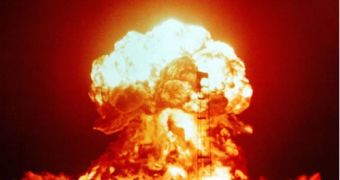World War II and the Cold War era saw several thousands of nuclear tests being carried out throughout the world, including the atomic bombings of the cities of Hiroshima and Nagasaki which literally put an end to hostilities in World War II. During that time, significant amounts of nuclear fallout have been produced, resulting in isotopes such as cesium-137 and strontium-90 that are not naturally occurring on Earth.
These two isotopes eventually reached the soil and water, from which they have been passed into plants and animals, and act as a signature that can be used to date the age of natural oils extracted from certain plants that are later included in binding agents used in paintings. Therefore, by measuring the concentrations of cesium-137 and strontium-90, researchers can accurately tell whether a painting said to have been created before the nuclear age is authentic or not or just a forgery mage after 1945.
Sources attribute the original idea for the newly mentioned testing method to curator Elena Basner of the Russian Museum in St. Petersburg, who also spends a lot of time working in authenticating art for the Bukowskis auctioneers. The process of art authentication is getting increasingly difficult with the passing of the time, as forgers acquire ever increasing skills in duplicating genuine artworks. Thus, Basner started looking for a more reliable and faster method of successfully completing the authentication process.
Along with chemist Andrey Krusanov, who is a writer concerned with the history of Russian avant-garde painting, and several other researchers of the Russian Academy of Sciences in St. Petersburg, Basner thought of measuring the cesium-137 and strontium-90 levels with the help of a typical mass spectrometer. The technique is extremely simple and fast, involving only the extraction of a very small sample from a particular painting, and can immediately tell whether it was created in the first or the second half of the 20th century or not.
The test is relevant in the case of original Russian avant-garde paintings, since most of them have been produced before the 1930. Any painting dated before the nuclear age and containing traces of cesium-137 and strontium-90, is most but certainly a forgery.
Albeit, there is a problem in the case of the paintings created after 1945. Because both the original and the fake would have been exposed to some levels of nuclear fallout, the test cannot conclusively say which one is genuine, nor can it identify a painting simply by the fact that it does not contain any trace of the two scarce isotopes. One for example, could create a fake simply by using materials dated to the same period as the original, thus the method proposed by Basner must be backed up by a series of alternative tests to confirm the authenticity of a artwork, says Antonia Kimbell of the Art Loss Register, UK.

 14 DAY TRIAL //
14 DAY TRIAL //